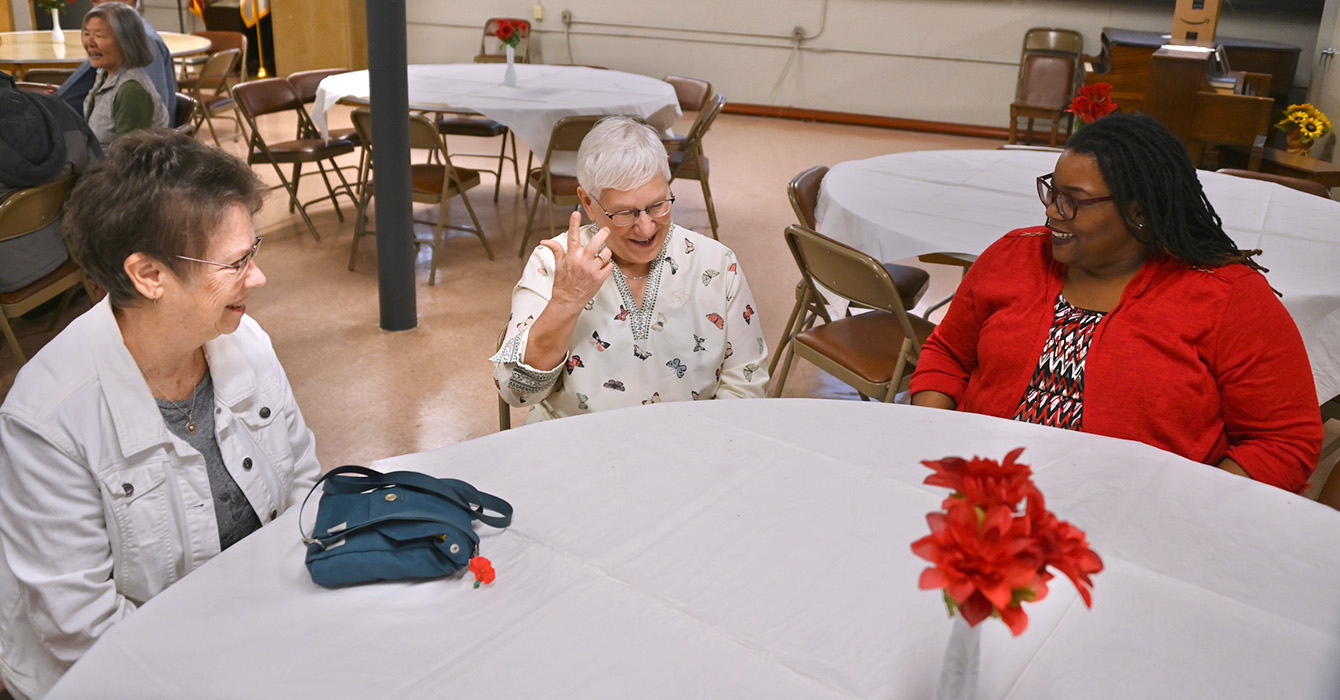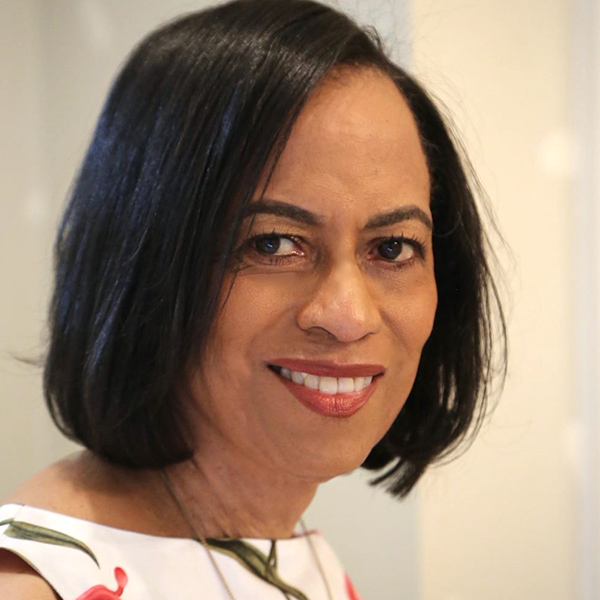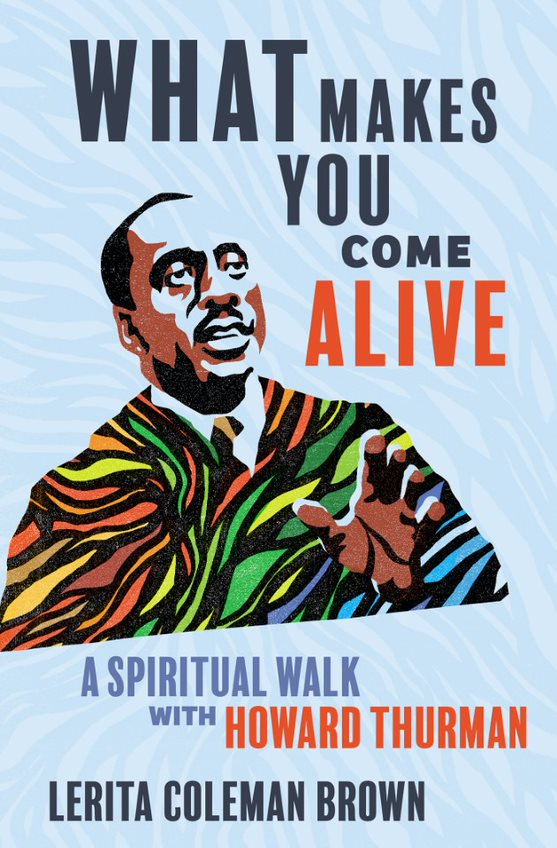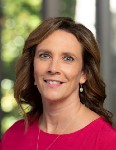Update: Samuel Kamaleson died Feb. 28, 2021.
He’d never have predicted it, but more than 50 years ago, there came a day when Samuel Kamaleson found himself standing next to a dustbin, eyes shut tight, singing to strangers in a crowded bazaar in Madras, India. The 20-something university student hadn’t planned this. He felt foolish. But he’d just lost a debate with Jesus, and singing was the only logical thing for him to do.
It was a key moment in Kamaleson’s active life of service to God. Now 79, Kamaleson is recognized as a visionary teacher and inspiration to several generations of evangelists and mission leaders across the globe.
“Sam has been a mentor to many church leaders,” said Arthur McPhee, E. Stanley Jones Professor of Evangelism at Asbury Theological Seminary. McPhee is currently working on a biography of Kamaleson and his far-reaching influence.
“In Communist Eastern Europe, more than one pastor told me, ‘Sam is my spiritual father.’ In his native Tamil Nadu, I often hear pastors address him as ‘Annan’ (elder brother),” McPhee said.
Not long after he found himself singing in the street, Kamaleson’s service began with street ministry in Madras (now known as Chennai). After completing his degree in veterinary medicine, Kamaleson came to the attention of an American administrator for the Methodist Church working in India, J.T. Seamands. Seamands mentored the young Kamaleson and helped him enroll at the Asbury Theological Seminary in Kentucky, where he first studied sacred music. He earned a master of divinity and, later, a master of theology.
After ordination, Kamaleson, in partnership with his wife, Adela, served parishes in India and in Texas. After earning a doctorate of sacred theology from Emory University and working as a district superintendent for the Methodist Church of Southern Asia, Kamaleson was tapped in 1974 to become vice president for World Vision International, where he served in various roles until his retirement in 1996.
Questions to consider
Questions to consider:
- What would it take for you to “sing like a fool” for what you believe?
- How do you demonstrate to others that they are valuable to you -- as Samuel Kamaleson’s mentor did when he served Kamaleson breakfast and taught him geometry?
- What would it take for you or your organization to “imagine forward” as Kamaleson helped Shane Clark do?
- How can reflecting and processing with a mentor become a dedicated practice for you?
- How do you reflect the “attractiveness of the Christ” in your mentoring relationships?
Over the years, he also has created and run two foundations in India, published books, recorded sacred music, singing in both English and Tamil, and encouraged the faithful at countless gatherings for pastors and church leaders around the globe. He and his wife have three children and five grandchildren.
Working for World Vision, Kamaleson led pastors conferences in dozens of countries -- as many as 13 conferences in one year. Some claim that Kamaleson has spoken to more church leaders than anyone in the history of the church. While that can’t be verified, it still suggests the breadth of his influence.
“It is not possible to know if he has,” McPhee said, “but with a handful of others, Sam belongs on the short list. Mentoring pastors and addressing pastors conferences are distinct roles. However, Sam has given himself to both, and along with his evangelistic work and leadership, they have amounted to a remarkable contribution to the work of the kingdom.”
‘God is listening’
The last thing Kamaleson expected was a life in ministry when he was a student in the mid-1950s. It’s not that he’d never bumped up against the idea. He had been told specifically that his life had been set aside for God’s use.
But the youthful Kamaleson had mapped out his own future, and ministry wasn’t part of it. It’s an old story, at least as old as Noah, and yet, as Kamaleson happily points out, it is a story that is relived in fresh, vibrant and immediate ways with each generation: God has other plans.
His father died when he was 4, and Kamaleson’s mother raised him as a single parent, with the help of many relatives and in-laws. The family had been Christian for five generations, but Kamaleson said his experience with faith was limited to the practice of tradition, such as attending weekly worship and memorizing Scripture.
“When I graduated from high school, my mother took me to the church,” he said. “She prayed and thanked God; then she told me she had dedicated me to the ministry. This is why she had called me Samuel. I acted smart and said, ‘You didn’t consult me, so I am not responsible for something that I had no role to play in.’”
His mother was silent, he recalls, and, feeling remorseful, he added, “If I become no good for anything, then I’ll become a minister.”
“You be careful,” she replied, “because God is listening.”
Sitting in his living room on a sunny day in Arcadia, Calif., surrounded by devotional works of art from around the world, Kamaleson appears to be at least 20 years younger than his age, with his head of full, dark hair and only a few lines on his face. Kamaleson breathes in deeply as he recalls that moment six decades ago and half a world away. “I didn’t know a God who could listen like that.”
He set off in his own direction, but the path led Kamaleson back in unexpected ways. While studying to be a veterinarian, he encountered a fellow student, formerly Hindu, who had converted to Christianity.
“The only explanation he could give was that he met Jesus,” Kamaleson said. “That language surprised me. ‘How can you meet Jesus?’ I thought.”
Look like a fool
It wasn’t long until Kamaleson found out for himself. Like the Samaritan woman in John 4, Kamaleson would unexpectedly encounter his Messiah and experience what he likes to call the “winsomeness of the Son of God.”
Once people have heard good news as the woman did, Kamaleson said, they are eager to share what they have learned, and they are not afraid to be fearless or to look foolish, which brings his story back to that dustbin in India.
He was walking down a busy street, surrounded by throngs of people separated from him by the strictly defined layers of Indian society. Then, he recalls, he heard a voice ask him, “What about these people around you?” and Kamaleson thought, “If you don’t tell them that Jesus Christ is alive, how will they know?” Even if he were to act, Kamaleson thought, how would he ever gain the people’s attention?
“Sing,” came the answer.
He wrestled with his thoughts. “If I sing,” he thought, “I will look like a fool.” Then the voice told him that he already was a fool; the question was whether he would be a silent, stupid fool or a common fool filled with the joy of Christ, able to speak his truth.
And that is when he found a spot next to the dustbin, closed his eyes and began to sing. When he opened his eyes again, he saw a crowd expectantly waiting.
“I was terribly nervous,” he said. “I was in a great hurry to unload and get away. So I said, ‘He is alive!’ I didn’t even say who the ‘he’ was. Then I said, ‘I know he is alive.’ And then, ‘You too can find out that he is alive.’ To this day, this is my logic. This is what I continue to do.”
Relationship is the core
Kamaleson said that evangelism and mentoring have much in common. Both require enthusiastic witness and kindness, keys to opening hearts and encouraging minds.
“Mentoring isn’t something someone really does intentionally,” he explains. “It is a compulsion that comes on you, that makes you weigh relationship as being the primary emphasis in all of life. That I have found to be very true -- that relationship is the core of any truth.”
Kamaleson cites examples of how these relationships spark and flourish -- one from Scripture and one from his life.
He points to the first chapter of John. John and Andrew hear John the Baptizer say of Jesus, “This is the One.” The two go after him, and Jesus asks them why they are following. They say, “Teacher, we can’t tell you while we’re walking. Sit down and let us tell you.” Jesus answers, “If you are that inquisitive, then come find out.”
In the story, Kamaleson said, Jesus has met the men where they are and responded to their curiosity.
Kamaleson recalls an instance of this happening in his own life. In high school, he said, he was a below-average student of mathematics. In frustration, his mother turned him over to an instructor, Mr. Victor.
“I went to see him with fear and trembling,” Kamaleson recalls. “I thought he was going to bring the rod down on me. But he asked me to sit and he brought me breakfast. Then he gave me my first lesson in geometry, and I have never forgotten that lesson. The man taught me that I was valuable, you see, because he would spend time with me. Those are the principles of mentoring that I unknowingly absorbed. That was a major event in my life, that somebody would care so much for me.”
Chris Heuertz, co-director of the mission organization Word Made Flesh, has similar memories of Kamaleson. In the early 1990s, Heuertz was attending Asbury College (now University), which is near Asbury Theological Seminary in Wilmore, Ky. He was among a group of students who came to hear Kamaleson deliver a guest lecture.
“He provoked a new sort of missional imagination in us,” Heuertz recalls. The group included Shane Clark, who would go on to found Word Made Flesh, an international mission-driven organization focused on providing direct service. Clark spent a year accompanying Kamaleson around the world.
“Shane was exposed to really intense and graphic human suffering and poverty,” Heuertz said. “Through that mentoring relationship, Dr. Kamaleson and Shane imagined forward what could a missional response, a wholeness response, an incarnational response to this become. That was the soil for the imagination that pressed Shane into putting Word Made Flesh together.
“All these new books that are reinterpreting the traditional mission trends of our Christian mosaic -- Kamaleson was way ahead of that,” Heuertz said. “He was a groundbreaker, doing real mission in the ’60s and ’70s.”
Heuertz joined Word Made Flesh in 1993 and went to work in South India. There, he found himself in regular contact with Mother Teresa and her Missionaries of Charity as well as Kamaleson, who was founding president of two local organizations: the Friends Missionary Prayer Band, which currently sends Indian missionaries throughout India; and the Bethel Agricultural Fellowship, which provides the local population with land for crop cultivation along with medical and education service. (Kamaleson served both organizations as president until last year, when he was given emeritus status.)
Heuertz said that Kamaleson encouraged them to think deeply about what they saw. “Dr. Kamaleson nudged us toward an imagination that would hold those two models in tension and draw from the best of them.”
In 1994, Heuertz accompanied Kamaleson to a conference in Romania. Before the fall of communism, Kamaleson, who carries an Indian passport, had been able to travel easily through Eastern bloc countries, quietly conducting workshops for the faithful. He was briefly jailed for his work in November 1989, a month before dictator Nicolae Ceauşescu was executed. The following April, Kamaleson was back in Romania, openly leading what would become an ongoing conference for pastors. This work continues, and Kamaleson spent a month this summer participating in conferences around Eastern Europe.
Though Heuertz had no official role or responsibilities during the 1994 gathering (which brought together leaders from Roman Catholic, Protestant, Orthodox, evangelical and Roma traditions), he accompanied Kamaleson everywhere. Heuertz recalls, for example, being the guest of the metropolitan of the Orthodox Church in Moldova, the man who eventually would become Patriarch Daniel of Romania.
“Kamaleson was so generous,” Heuertz said. “He would spend lots of time with us. The evenings usually ended with us sitting around a table with a cup of tea and reflecting and processing the day. It was great -- there was no pressure to perform, there was no pressure to offer anything, but it was a great opportunity to receive, and receive quite a bit.
“I think ultimately we all experienced this real profound sense of a man who believed in young people and would routinely include young people in what he was doing.”
Worldwide influence
Just as he learned long ago from his teacher Mr. Victor, Kamaleson naturally seeks ways to let those around him know that they are important and to feed their hunger.
“Including myself, I have seen hundreds of young pastors and church leaders who have made a deeper commitment to serving Christ and his people as a direct result of Kamaleson’s teaching and preaching,” said Martin Alphonse, professor of intercultural studies at Multnomah University in Portland, Ore.
Alphonse was first inspired to Christian service as a member of Kamaleson’s congregation in Chennai. “He is a master communicator. His exposition on the theme of the kingdom of God and servant leadership has been the finest and most brilliant I have heard.”
Alphonse said he has seen countless people challenged by Kamaleson’s witness. “Many have eventually resigned lucrative careers and entered into full-time Christian service as a result of his impact on them. Hundreds of university graduates have become missionaries as a result of his very distinguished leadership.”
“He is someone who would go wherever he was called and give them his passion for evangelism for the kingdom,” said Jayakumar Christian, director of World Vision India. Like Alphonse, Christian was first inspired to service as a member of Kamaleson’s congregation. “[Kamaleson] is someone who will travel anywhere, as long as there is a platform for him to preach and teach.”
The worldwide reach of those who call Kamaleson their mentor offers a compelling argument for Kamaleson’s lasting influence on generations of evangelists and leaders, but Kamaleson himself gives credit elsewhere.
“The real mentor,” Kamaleson said, “is the one I am talking about as the living Christ. The whole world thinks that [I am] mentoring others, but [I am] only reflecting the attractiveness of the Christ.”














